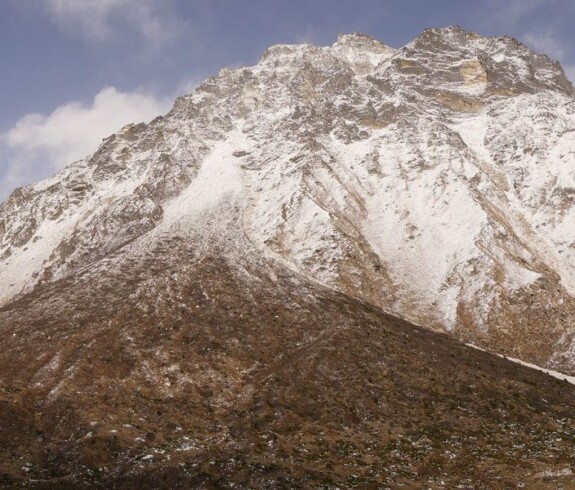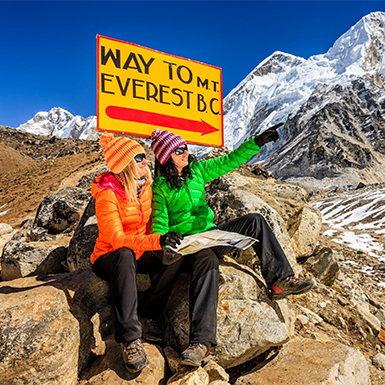Kanchenjunga Base Camp Trekking will be fascinating, providing you with a whole bundle of thrills. Kanchenjunga is the world’s third tallest peak in Nepal’s eastern region. You can’t dispute that the Eastern Himalayas have a certain aura. The spectacular view of the Multiple Himalayas represents by the misty hills going through various regions. Moreover, Kanchenjunga Base Camp Trekking provides opportunities to see nature in its purest form. The spectacular streams, Rhododendron’s mystical atmosphere, mind-blowing glaciers, the Himalayas well above clouds, and Pleasurable Atmosphere will mesmerize you.
Kanchenjunga Base Camp Trekking
Nepal has several mountaineering options, but Kanchenjunga Base Camp is one of the most distinctive and underrated. Similarly, the monsoon winds touch these ranges by the chilly breeze blowing directly from the Bay of Bengal, making it more adventurous. Kanchenjunga is the world’s third-highest peak, behind Mount K2, with an elevation of 8586 meters. Similarly, we will see a blend of exciting nature aspects on the route to Kanchenjunga Base Camp. Everything fascinates us with its ambient reality, from natural flora and animals to ancient ethnic tribes such as the Rai and Limbu people.
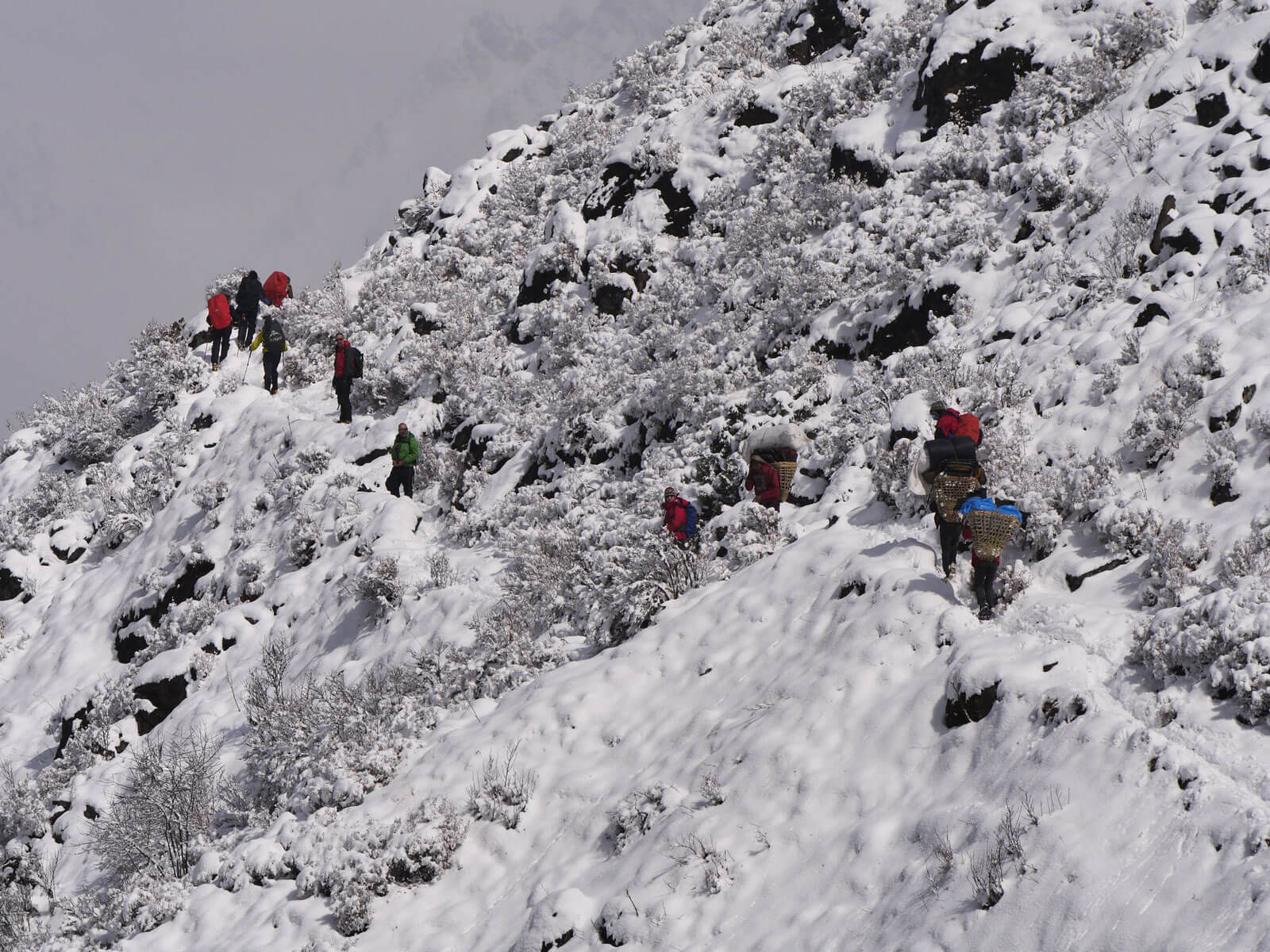
Moreover, we can see vast views of the Himalayas and vegetation from Kanchenjunga Base Camp’s northern trail. This region’s gorgeous landscape is distinct and one-of-a-kind. Kanchenjunga Base Camp is around (4500m) to (5500m) above sea level. Kanchenjunga National Park is one of the most important attractions to view on Kanchenjunga Base Camp Trekking. You will likely access Kanchenjunga Base Camp after a lovely 5- to 6-hour journey from Cheram (3870m). Lali Kharka, Khasewa, and Pumphe Dada (1178m) are lovely settlements along the trail. Our final resting place will also be at Ramche (4155m). The eastern slopes are slightly more challenging to ascend since they are slick.
You’ll need to grab some drinks and snacks on the trek to base camp. Occasionally, this might take a little longer to go to the nearby teahouses. Within this national park, we can also refresh our minds by observing some of the fantastic wildlife such as snow leopards, red pandas, mountain deer, and foliage. In comparison to other trekking sites, the crowds will be less here. As a result, there are still some magical places to discover. Moreover, you will discover majestic nature elements such as glaciers, lush meadows on the summit, and so on.
The isolation evokes real Nepalese emotions on the trek to Kanchenjunga Base Camp. Likewise, teahouses are available in several locations. You’ll also get the opportunity to camp in Kanchenjunga’s shadow. Furthermore, the eastern heritage and culture will be one-of-a-kind and delightful to experience. People from all around the world are warmly welcomed in these communities. The kiratis are well-behaved, disciplined people among Nepal’s bravest citizens. As a result, Kanchenjunga Base Camp is a complete package of different adventure features that you must experience at least once in your life.
Kanchenjunga Base Camp Trek Solo
It will be a different experience for you if you are a peace lover who plans to trek alone with your guide and porter. Managing money in many elements of the Kanchenjunga Base Camp Trek without a group will be a little more challenging. However, if you don’t want to share your trekking money, it’s okay; you may have a fantastic time on your own. If you are a competent trekker, you will have no problems. You may trek Kanchenjunga Base Camp to the best with your guide and porters. Furthermore, when you trek alone, there will be a cost difference. You may split and lower the cost when undertaking a group trek project.
Furthermore, you are responsible for paying for your lodging, meals, and other incidentals. Secondly, the cost of the guides and porters will be a little higher than you had anticipated. However, with a daily cost of more than $60, it will be an incredible voyage for you. Because the Kanchenjunga Base Camp Trekking is always less crowded, trekking solo is an obvious option. During Kanchenjunga Base Camp Trekking, enjoying the spectacular view of mountains, glaciers, and Rhododendrons while alone pondering different aspects of natural components would be one of the most fantastic emotions ever. A solo trekking excursion will be enjoyable for individuals who prefer peace over crowds. As a result, if you can manage all of the costs on your own, you may fully enjoy Solo Kanchenjunga Base Camp Trekking.
Kanchenjunga Base Camp Trek Difficulty
While ascending Kanchenjunga Base Camp, you may face various challenges. As a result, before trekking to Kanchenjunga Base Camp, you must thoroughly understand the difficulties.
Weather and Temperatures
During Kanchenjunga Base Camp Trekking, the weather and temperature significantly influence. Eastern Nepal’s weather is most likely entirely unpredictable. The challenges emerge when the weather does not cooperate with you throughout the trek. Similarly, the best experience to trek to Kanchenjunga Base Camp is in the spring and autumn. It will be approximately 15 to 20 degrees Celsius during the day and around -5 degrees Celsius at night. The bright sun will provide a fantastic view of this region’s pristine snow-capped mountains and lush foliage. The region’s often shifting weather might cause problems while trekking.
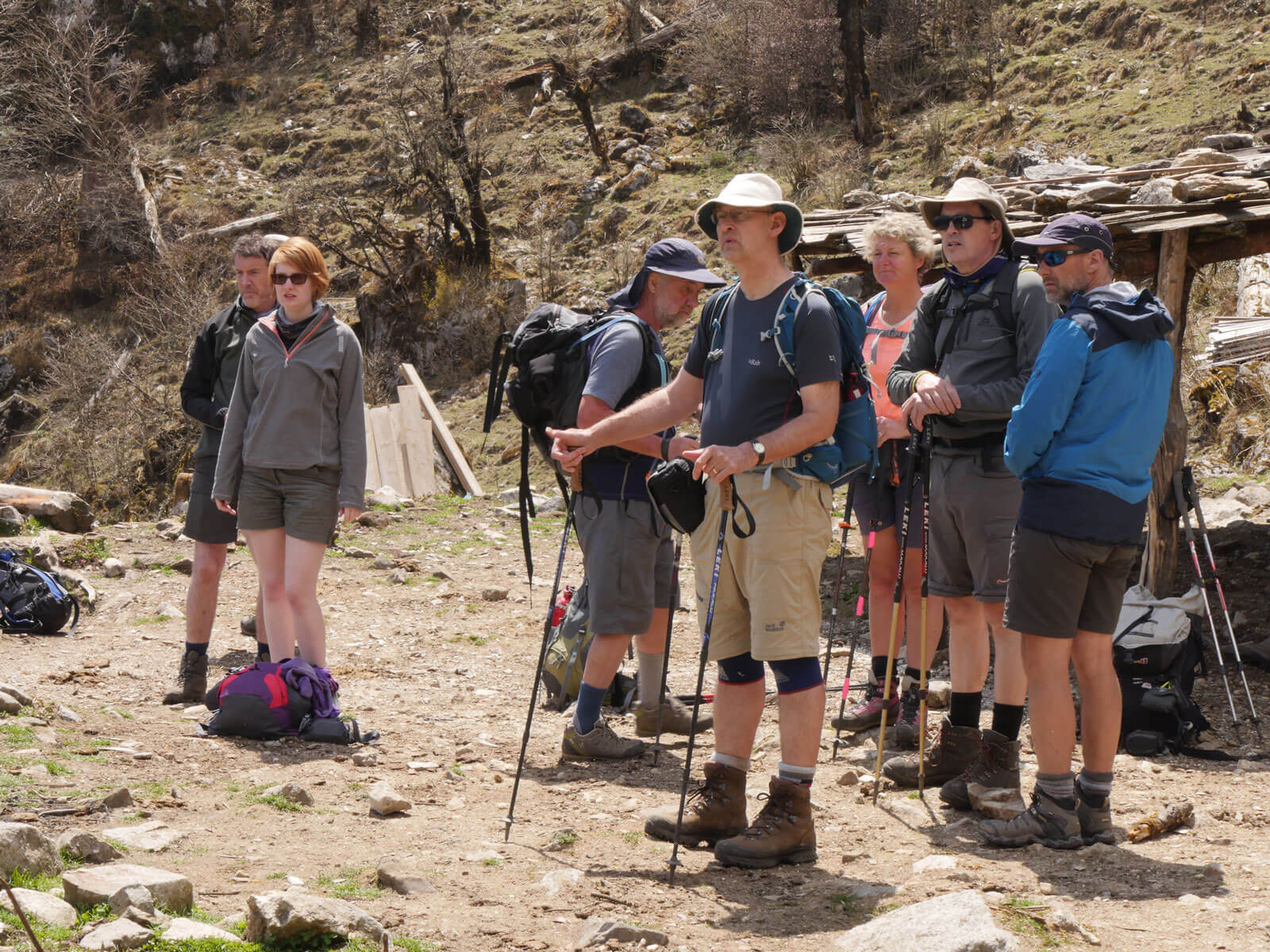
Similarly, during the Monsoon Season, the slick trail across pang Pema would be exceedingly difficult to navigate. The Bay of Bengal’s monsoon breeze directly strikes these mountains, causing torrential rain. The months of June, July, and August make your expedition both rigorous and exhilarating. The overcast weather will make it challenging to gain vital visibility of Kanchenjunga Mountain and its vicinity. Furthermore, the winter season here is bitterly cold, causing shivering from the commencement to the completion of the walk. During the day, it will be approximately 3 to 4 degrees Celsius, while at night, it will be around -10 degrees Celsius. On the other hand, adventure trekkers may enjoy practically any year’s season if they thoroughly research the challenging components of Kanchenjunga Base Camp Trekking in terms of weather and Temperatures.
Distance
Another challenging element of Kanchenjunga Base Camp Trekking is the distance. Kanchenjunga features one of the longest trails, stretching from the top reaches of Taplejung to Pang Pema (5200m). Similarly, you will need to trek for 6 to 7 hours each day to reach this base camp, requiring vital physical and psychological preparation.
Similarly, the overall distance of the Kanchenjunga Base Camp Trek is around 200 kilometers, implying that you must trek at least 10 kilometers every day. Complex challenges frequently lead to the desired objective. You will feel utterly calm and vibrant when you arrive at pang Pema. The sight of several glaciers will add to the thrill of your adventure. So, to participate in this lovely Kanchenjunga Base Camp Trekking, you must first train and become physically and mentally fit.
Altitude
Altitude is another significant challenge when trekking to Kanchenjunga Base Camp. It will help if you remember that you would be trekking in the lee of the world’s third tallest peak. From 1400m to 5500m, the trial spans. As you gradually rise to a more significant elevation, the process of acquiring altitude accelerates day by day. Furthermore, Kanchenjunga Base Camp’s goal height would be around 5000 and 5200 meters, making it difficult for novices. As you may be aware, there is a substantial risk of Altitude Sickness when rising to altitudes exceeding 2500m to 3000m. Altitude sickness can cause various symptoms such as headaches, nausea, dehydration, and other ailments.
Altitude sickness might be a big issue during the Kanchenjunga Base Camp Trekking. To remove this difficulty component, you must acclimate throughout the trek and perform a solid workout before the expedition. Medical equipment and a quick-response kit are also necessary to avoid trekking problems.
Physical and Mental Fitness
To simplify Kanchenjunga Base Camp Trekking, you should do various exercises and yogas. The efficient blood circulation in your body and brain will aid you in acquiring sufficient oxygen. On your trek, the oxygen level in your body preserves your vitality and unleashes your stamina. Kanchenjunga has a moderate difficulty level, which indicates that anyone may climb it. However, the slopes of the world’s third tallest peak should not be underestimated. In this scenario, yoga, swimming, cycling, trekking on regular slopes, and uphill and downhill jogging will assist you in reaching Kanchenjunga Base Camp Trekking.
Kanchenjunga Base Camp to Summit
Kanchenjunga Base Camp Trek’s enchanting ambiance will convey you to a state of contentment and calm. The ascent to the peak is complex, and each step will provide an unexpected thrill. Likewise, we’ll take the trail through the Ghunsa. Ghunsa is a lovely and historic Sherpa village in the Eastern Himalayan foothills. Moreover, you will reach the peak of the Kanchenjunga Base Camp after a pleasant trek through these picturesque towns. We’ll go to Kanchenjunga North Base Camp Pang Pema 5143m, passing through stunning high alpine vistas and lush villages. We will also stop at unique and typical teahouses for meals and accommodations.
Moreover, the trail leads up to the Ghusang and then directly to the Kanchenjunga Base Camp after passing via Khambachen to Lhonak (4500m). Before that, we’ll trek from Ranipauwa to Gyapla (2730m) to reach Khambachen, which will be an incredible experience. The scenic splendors of the eastern Himalayas add to the historic atmosphere. Additionally, from Pang Pema, we will trek to Kanchenjunga Base Camp (5140m).
Moreover, we’ll stop in the camp for a while before continuing to the peak. The high hills will be challenging to climb, but with the right gear and equipment, we’ll be able to overcome them and reach the summit of Ramche (5550m). We’ll then return to the Ghusang after shooting several shots and admiring the expansive vista of the eastern mountains, including Kanchenjunga, Everest, and Mera Peak. After that, we’ll return to Ghusang via ascending downhill. We will cross many mountain ranges from the lower Kanchenjunga South base camp, including the Janu Himal, Makalu, Everest, and local passes. Then, along the new Torongding route, it returns to Taplejung. Then we’ll return to Bhadrapur and fly to Kathmandu gently.
Kanchenjunga Base Camp Trek Cost
The cost of trekking to Kanchenjunga’s base camp is relatively low. It’s up to you to decide how you’ll handle it. The overall cost is expected to be around $2500 and $3000. After acquiring Trekking packages, it also depends on whether you are trekking solo, with a group, or with a trekking and tours organization. Similarly, we’ll go through some aspects of determining the cost of Kanchenjunga Base Camp Trekking.
Accommodations and meals
During the Kanchenjunga Base Camp Trekking, there will be a variety of teahouses and lodges to choose from. Similarly, the pricing is determined by the services you utilize. Also, everything will be great, from delectable lunch and dinner to filling breakfast. There will be internet access and hot showers available. Accommodations range from $5 to $35 a night, while meals range from $25 to $30 per day, including lunch, supper, and breakfast. Within teahouses, prices differ according to the services they provide.
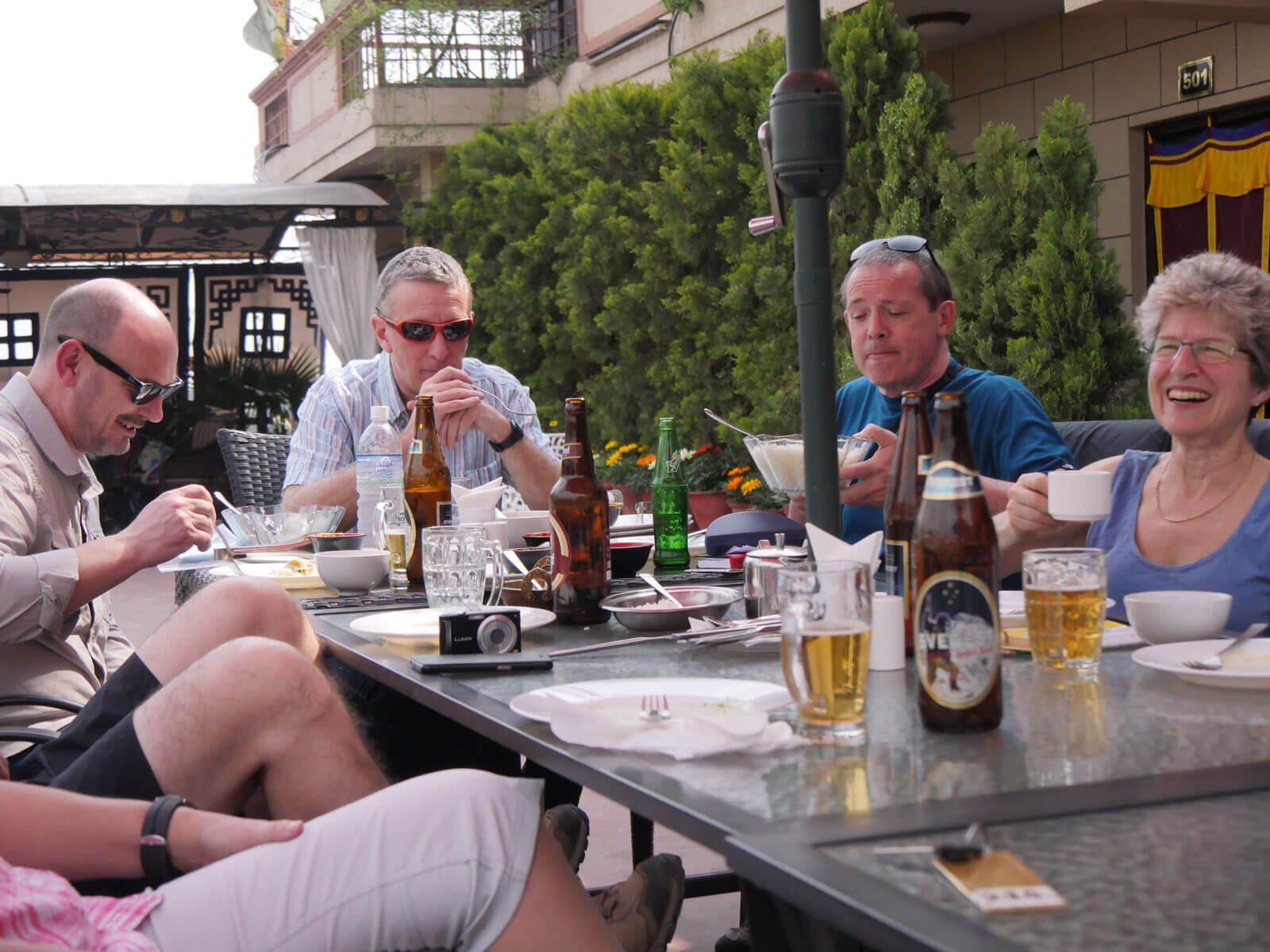
Guides and porters
Guides and porters will be your strength during your Kanchenjunga Base Camp Trekking. They’ll be there to help you with everything you need. Porters will similarly transport your 20 to 25 kg cargo for $20 to $25 per day. Aside from that, a guide will set you back between $25 and $35 every day. You can give them gratuities in exchange for their services, but it isn’t obligatory.
Permits
Permits are required for Kanchenjunga Base Camp Trekking. Before trekking to obtain permits, ensure you have all the necessary documentation. This trek will require a Kanchenjunga Restricted Area permit and a Kanchenjunga Conservation Area permit. Each permit costs approximately $10 and $20 per week and can be procured in Kathmandu.
Transportations
It will cost roughly $95 to $100 to fly from Kathmandu to Bhadrapur. Then you may either hire a private vehicle or take a bus ride to Taplejung. The bus will cost between $4 and $6, while the private jeep costs between $25 and $30.
Out Expenses
You can also bring water bottles, energy-boosting meals, medical kits, and other essentials during the trek. Similarly, you may pick up some antiques or traditional items on your way back. In this case, you can set aside $4 to $8 to cover your out-of-pocket expenditures.
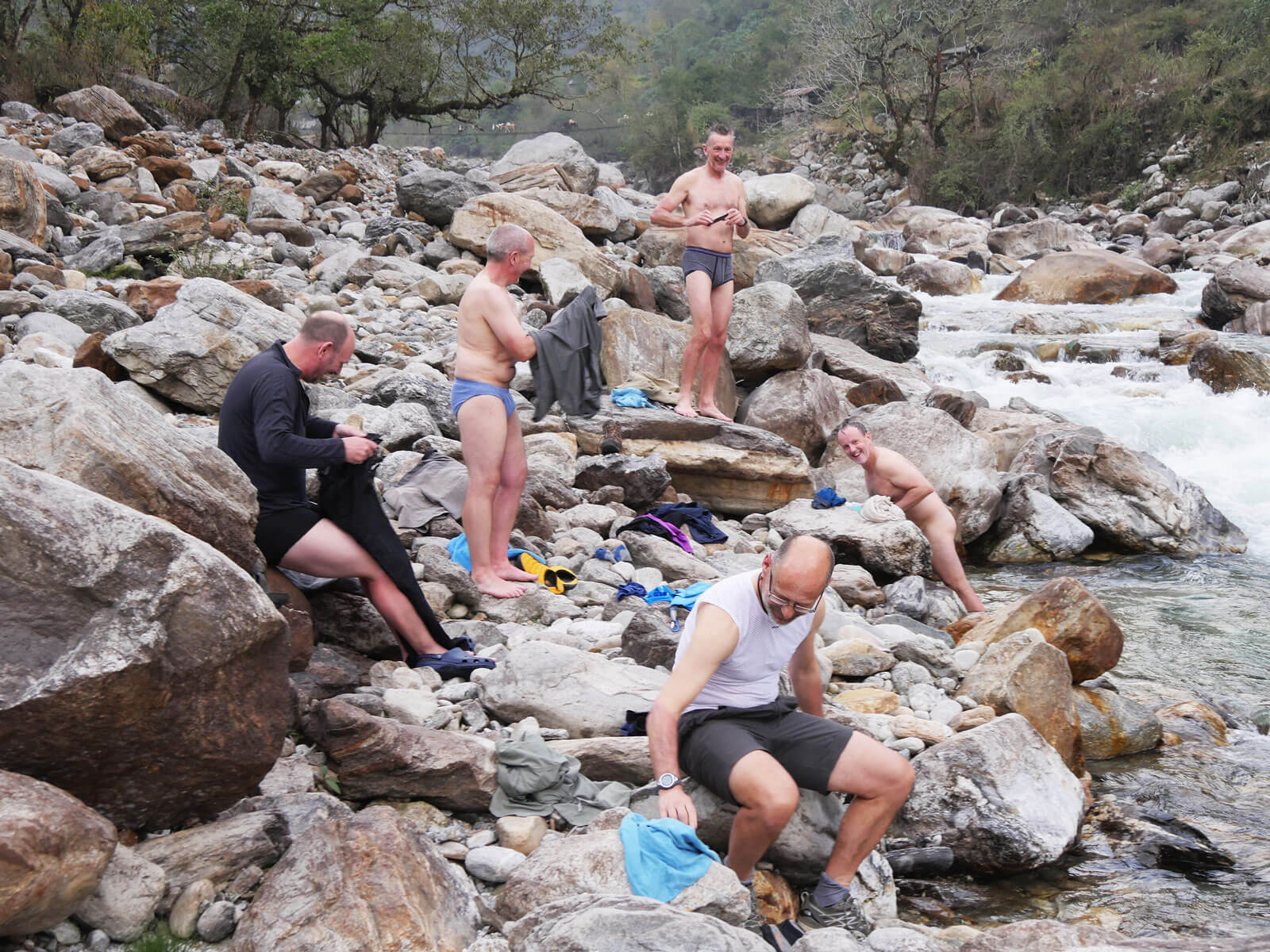
Kanchenjunga Base Camp Location
Kanchenjunga is the world’s third-highest mountain, with an elevation of 8586 meters. It straddles India’s, Tibet’s, and Nepal’s respective borders. Kanchenjunga’s several peaks are found in the northern part of Sikkim, near the Indian-Nepal border. Similarly, the Kanchenjunga Base Camp is between 4500 and 5400 meters above sea level and shares a border with Tibet in north Sikkim. Kanchenjunga Base Camp, meanwhile, is located in Nepal’s Far East. Mount Kanchenjunga is often regarded as one of the world’s most stunning summits. As the location is protected under a conservation area, several types of flora and wildlife may be seen throughout this trek.
Kanchenjunga Base Camp Trekking Map
Northern Base Camp
We’ll fly from Kathmandu to Bhadrapur, or we’ll fly from Kathmandu to Biratnagar. From Biratnagar, we will take a road vehicle or a flight to Suketar (2420m). We begin our exciting trek from Suketar to Mitlung (850m). We will take a trial of up to 5-6 hours of trekking every day (1190m). Similarly, we will make up to Sukathum (1640m) by eating delicious snacks and appropriate meals while staying nights at these sites. The trial will be narrow, traversing through several steep gorges. We will arrive in Amjilosa (2490m), a picturesque Sherpa town, after a 5-hour trek. We’ll be at Ghunsa (3430m) in 5 hours from Gyabla (2730m). Then, after crossing through Lhonak (4970m) to Pang Pema (5160m), we’ll climb straight uphill to the Northern Kanchenjunga Base Camp (5243m) and return.
Southern Base Camp
For this, we will take a southern trial from Suketar (2420m). Likewise, the trial goes straight towards the Simbu Dada (1845m) to Phunphung pass (1780m). Similarly, following steep rocks and slopes, we will ascend towards Sherpagaon(2080m), a lovely village of the Sherpa People. Within 6 to 7 hours, we will reach Tortong (2995m) to Tseram (3870m). Ascending straight uphill, we will take our first step to Ranchaur (4580m). Within 4 hours of the trek, we will reach the summit of Southern Base Camp of Kanchenjunga (4500m).
